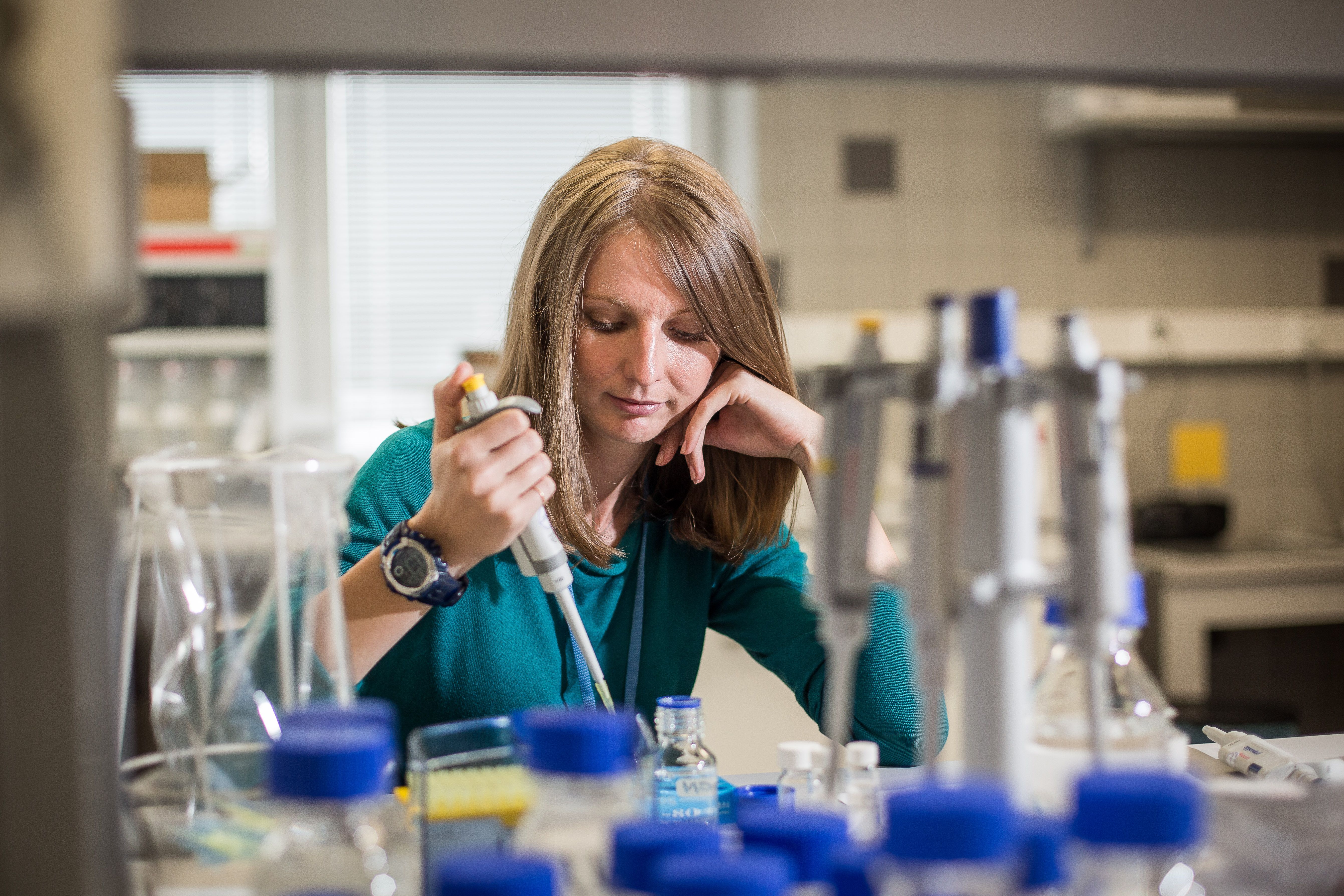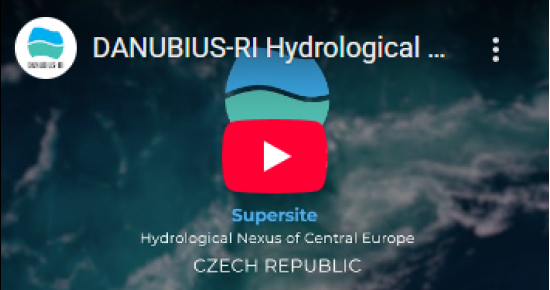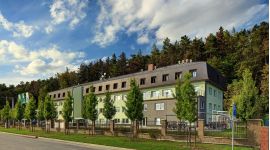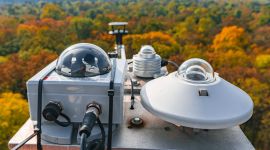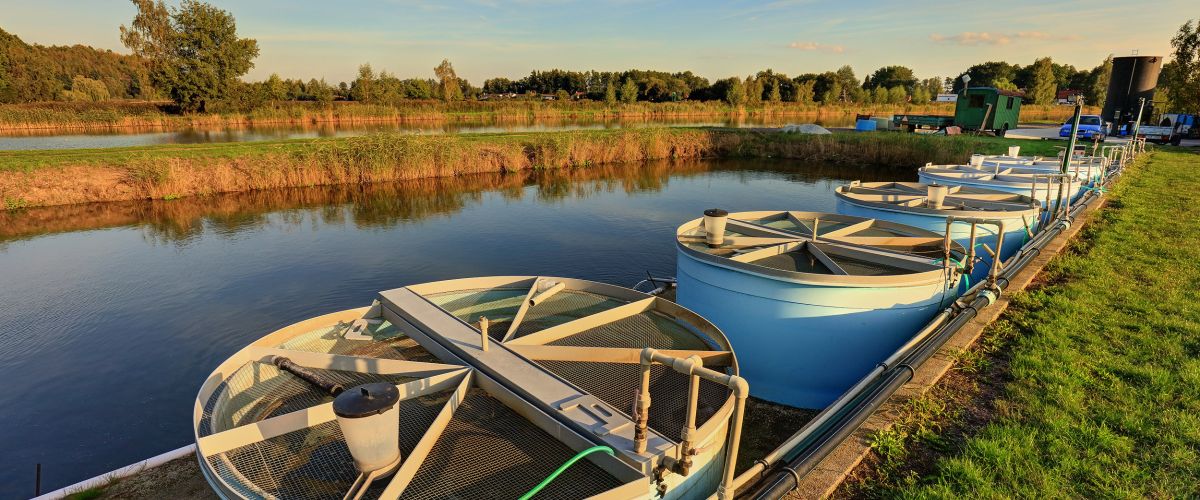
/CENAKVA/
a biodiverzity hydrocenóz
Danubius
Supersite Hydrological Nexus of Central Europe
„Supersite“ jsou klíčovými součástmi distribuované výzkumné infrastruktury DANUBIUS-RI. Slouží jako testovací prostředí pro vědecky excelentní koncepty, které zde budou dále rozvíjeny, ověřovány a aplikovány v reálných podmínkách.
Supersite "Hydrological Nexus of Central Europe" v rámci integrovaných výzkumných programů a zařízení konsorcia DANUBIUS-CZ (CENAKVA, CZECHGLOBE) si klademe za cíl vytvořit kapacity pro komplexní výzkum probíhajících procesů ve sladkovodních ekosystémech a jejich významu z hlediska ochrany biodiverzity, vodního prostředí a také vodních zdrojů nezbytných pro život a lidskou činnost.
"Hydrological Nexus of Central Europe" umístěný v České republice, představuje pramennou oblast hlavních evropských říčních systémů. Nachází se zde prameny řek Labe, Moravy (povodí Dunaje) a Odry, které podporují ekosystémy, zemědělství a dopravu napříč celou Evropou.
Výzkumná zařízení CENAKVA a CZECHGLOBE se specializují na výzkum sladkovodních ekosystémů a akvakultury s cílem podpořit ochranu biodiverzity. Nabízené služby zahrnují monitoring kvality vody a znečištění, hodnocení ekosystémových služeb, výzkum biodiverzity a inovace v oblasti akvakultury. Dále pasivní vzorkování pro detekci a sledování polárních organických kontaminantů ve vodním prostředí. Propojujeme odborníky z oblasti akvakultury, hydrobiologie, ekologie, toxikologie a ekonomie, kteří společně zkoumají různé faktory ovlivňující vodní i suchozemské ekosystémy. Tento interdisciplinární přístup je klíčový pro řešení problémů spojených s nově vznikajícími znečišťujícími látkami a živinami, které jsou hlavními přispěvateli ke znečištění vod, a přispívá k udržitelnému hospodaření s vodními zdroji. Odborné znalosti soustředěné v rámci supersite "Hydrological Nexus of Central Europe" poskytují přímé výstupy pro rozhodovací sféru a přispívají k tvorbě adaptačních a mitigačních strategií pro ochranu kritických ekosystémů.
Infrastruktura a služby SUPERSITE
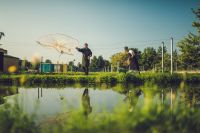
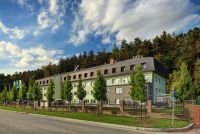
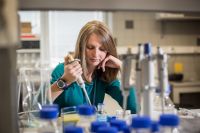
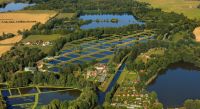
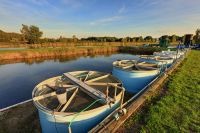
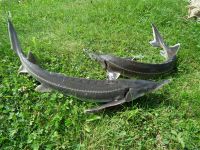
Infrastruktura a služby CENAKVA
Níže jsou uvedeny příklady nabízených služeb. Kompletní přehled o službách a vybavení centra CENAKVA je k dispozici zde. Rozsah poskytování jednotlivých služeb se může lišit v dostupnosti. V případě zájmu o jejich využití v rámci DANUBIUS-RI nás kontaktujte.
|
Passive sampling observation Observation of polar organic contaminants using POCIS passive samplers |
|
|
We offer a passive sampling approach for the detection and observation of polar organic contaminants in the water environment. Passive sampling is a complementary approach to the traditionally used grab or automated sampling. The benefit of passive sampling is that it provides data on time-integrated concentrations, avoiding the need to visit a sampling site multiple times to collect representative samples. A further advantage of passive sampling is the ability to mimic biological uptake, avoiding using aquatic organisms for biomonitoring. We propose 10 POCIS samplers, enough to cover a selected water body (river, lake, etc.) and to get basic information about contamination status. |
|
|
Histological Specimen Processing Histological processing of fish tissue, larvae, and embryos |
|
|
As is commonly known, histology is the discipline of biology that involves the microscopic examination of thin stained tissue sections to study their structure and correlate it with function. Histology can detect signs of disease, changes in the internal structure of tissues, sex changes in juvenile individuals etc. that are not easily recognized on gross examination. This requires the preparation of very thin, high-quality sections (slices) mounted on glass slides and appropriately stained to demonstrate normal and abnormal structures. This is how we are able to process your samples. As a Laboratory of germ cells, we specialize in fish gonads, larvae and embryos but we can histologically process all fish tissues according to your requirements. We suggest processing at least 20 samples of control or exposed fish for later statistical analysis. |
|
|
Analyses of lipids and fatty acids Analyses of lipids and fatty acids from a diverse range of matrices and environmental samples |
|
|
We offer analytical services for lipids and fatty acids in various matrices (mud, fish, soil, plants, fish faeces, cell culture, etc.) and samples from the water environment. The offered types of analyses are Gravimetric determination of lipid content, Lipid class separation, and quantification via the HPTLC method, Extraction of specific lipid classes, and Determination and quantification of fatty acid profiles in the total lipids or in different lipid classes. |
|
|
Sampling for food web analysis Field samplings and sampling processing to gain full food sources structure for future stable isotope analysis to evaluate trophic positions of particular taxa |
|
|
Understanding the trophic relationships in freshwater communities (and does not matter if with important endangered species or invaded by non-native species or both) is key to determine the modes of action and development of situation and project possible impacts of interacting variables on the natural habitat. Traditional gut content analysis provides snapshots of an individual's recent diet and inevitably overestimates the consumption of hard-digestible prey. It should be combined with advanced samplings of all possible sources for following carbon and nitrogen (possibly oxygen of sulphur) stable isotopes analysis (SIA) which integrates a longer dietary history and overcomes these issues. It enables quantification of a species’ diet, trophic position and niche width, and potential feeding competition. Nonetheless, coupling gut content analysis and complex SIA approaches has been demonstrated to provide the most reliable dietary information. It is also proven to be a powerful tool to determine the impacts of invasive species, including predation and competition pressure on native species, but also the interaction between different invasive species. Trophic webs change between habitats and seasons, following the availability of prey and environmental conditions within a watershed and can be highly modified by the waterbody management (aquaculture, electricity production, recreation etc.), physical and chemical variables, and naturally by the community composition. Therefore, it is essential to investigate invasive species’ trophic ecology at different stages, which can be accomplished with a space-for-time approach, by studying the trophic position in areas with well-established populations and at the invasion front. For that complex research approach is necessary to plan well organized, all-embracing sampling and samples processing for future SIA. |
|
Infrastruktura a služby CzechGlobe
Infrastruktura se skládá z následujících unikátních klíčových prvků, jejichž podrobnosti jsou k dispozici HERE.
Projekty
Pilotní projekty DANUBIUS RI v centru CENAKVA
-
Projekt 1
První pilotní výzvaEvaluating the ecological benefits of upgrading to advanced wastewater treatment in freshwater river ecosystems (WW-IMPACT)
-
Projekt 2
První pilotní výzvaTire additives in road runoffs: monitoring and toxicity assessment within river-sea systems
-
Projekt 3
Druhá pilotní výzvaWatercolor and water variability – what is the best for the aquatic vegetation along the coast of Gulf of Riga (W-BEST)
Centrum CENAKVA se aktivně zapojuje do evropského konsorcia DANUBIUS -RI poskytováním unikátních služeb našich výzkumných programů VP1, VP2 a VP3.
DANUBIUS RI se zaměřil svou výzvou (projekt DANUBIUS-IP 101079778) na juniorní výzkumníky a doktorandy na téma „Voda, sediment a biotické variace a jejich dopady na vodní ekosystémy v systémech řeka-moře při extrémních událostech a scénářích změny klimatu“.
Podrobnosti o projektech a celý článek je k dispozici zde.
Newsletter je k dispozici zde.
DANUBIUS-IP je projekt EU Horizon Europe, financovaný Evropskou unií (HORIZON-INFRA-2021-DEV-02) na základě grantové smlouvy č. 101079778.



